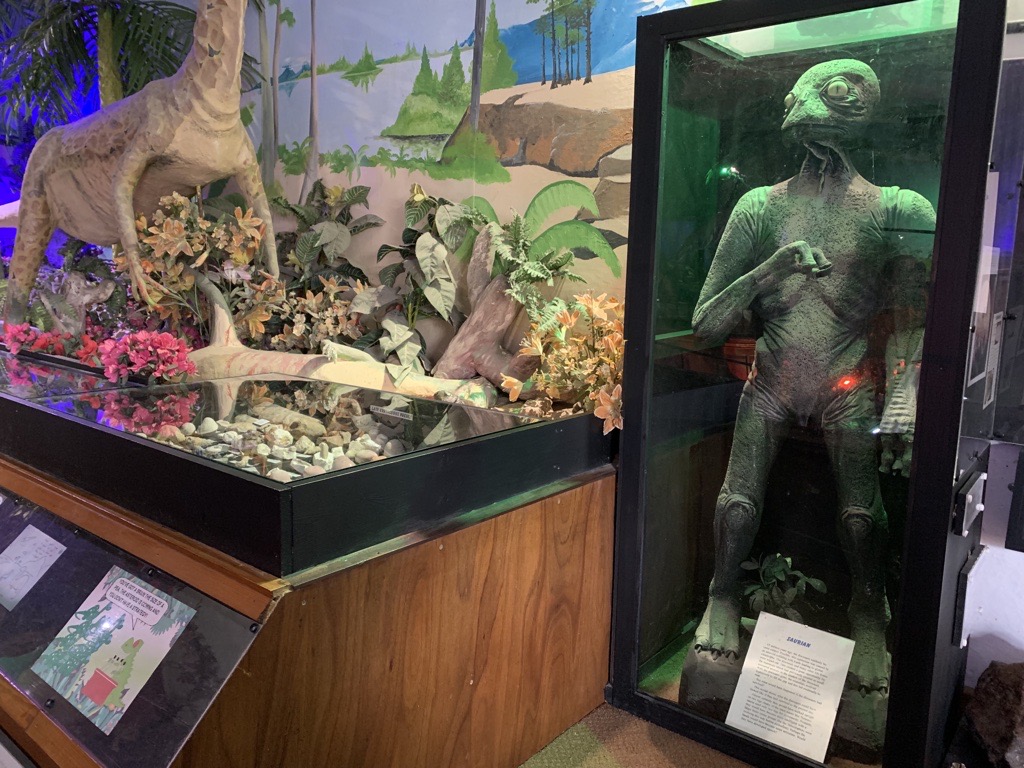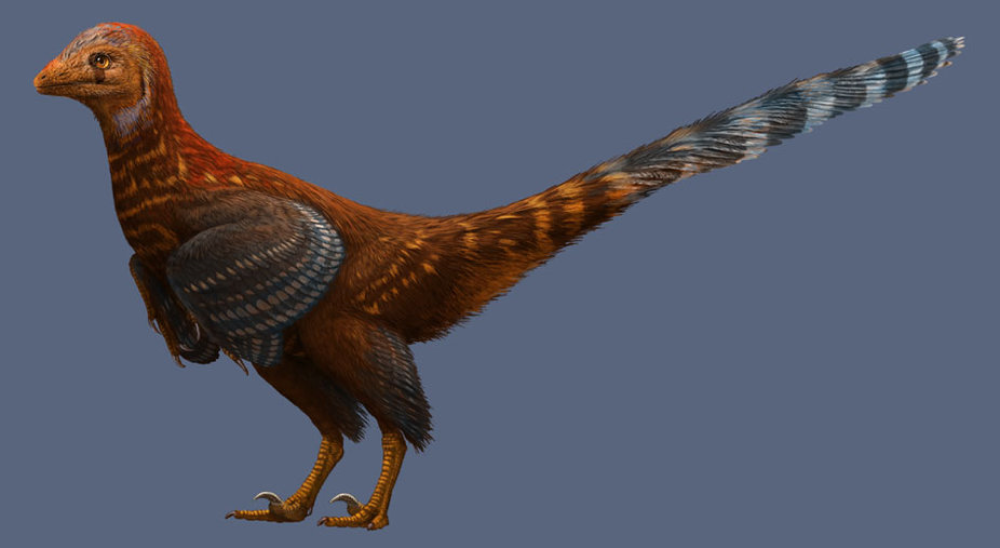Imagine a world in which Chicxulub hadn’t put an end to The Age Of Dinosaurs: would mammals have risen? Would humans exist? Or would the dinosauroids rule the day?
The dinosauroid is a hypothetical animal that’s been suggested as a possible next step for a group of carnivorous dinosaurs. What could they have looked like? A model of such a creature at the Dinosaurland Fossil Museum in Lyme Regis has some thoughts:
“Almost certainly they would have walked upright on two legs (many of the meat eaters like Tyrannosaurus used only two legs for movement),” reads a description next to a dinosauroid model at the museum. “Probably, they would have become more intelligent with a larger brain (some groups like the Velociraptors were evolving this way before extinction). Perhaps the hands would have become more articulate. Would they have developed speech?”

The dinosauroid model in Lyme Regis.
Image credit: IFLScience
It’s an appealing concept to fans of speculative zoology – a subgenre of science fiction and art movement that ponders where evolution could take us, and what hypothetical animals might arise. The idea of a dinosauroid first came around in the 1980s when Dale Russell, palaeontologist and artist, teamed up with a model maker named Ron Séguin.
Their vision for a dinosauroid evolved from a carnivorous dinosaur into an animal capable of tool use, one that walked upright and had thumbs. It was said to come from the troodontids, a group of Theropods that were already bipedal before the Cretaceous-Paleogene extinction event. Would a bit more time have had them strutting like a human?
In truth, evolution has its limits. We see it in the size of Sauropods, a group that evolved to boast some of the biggest dinosaurs ever to walk the planet. That great size appeared all over the world, but the common denominator among the supergiants was that they were Sauropods, while other dinosaur groups didn’t – in the same amount of evolutionary time – grow to be so mighty.

A life reconstruction of the troodontid Jianianhualong tengi by Julius T. Csotonyi.
A mini dinosaur group is unlikely to adopt a giant Sauropod body in the same way that a Theropod dinosaur is unlikely to end up looking like a human. Instead, suggests TetZoo palaeontologist Dr Darren Naish, they’d most likely have gone the way of bustards, big hawks, or ground hornbills.
Much of the human blueprint was written in at our early beginnings, back when we were broad primates with decent dexterity who didn’t yet have to worry about rent or social media. Sigh, the good old days.
Our path to the thumb-wielding egg heads we are today can be tracked in stages of our evolution. A path that the Troodontids are unlikely to have trodden no matter how much extra time they had. So, what was the thinking behind the dinosauroid idea?
Prior to the original model’s creation, the scientific community was piecing together details about the troodontids. Chiefly, that they had bigger brains compared to other dinosaurs, and may have been en route to becoming a dominant species had everything not blown up.
A two-legged goat was fairly influential, as it exhibited a shift in musculature and shallower chest after it was forced to walk on its two remaining limbs. Such a shift could’ve taken the barrel-chested troodontids in a similar direction, negating the need for a tail as they evolved the musculature and pelvic requirements for upright life. And as for that big brain assuring primate-like intelligence? Well, that’s a whole other can of worms.
The dinosauroid is a curious estimation for a hypothetical animal, and one we can all enjoy in the knowledge that it is just that, hypothetical. If you’d like to see an alternative take on where the troodontids might have ended up, check out this awesome and – frankly – equally terrifying illustration by artist Nemo Ramjet that features in an article by Naish.
I think we can all agree we humans are richer for not having to compete for resources with that thing.
Source Link: If Dinosaurs Weren't Extinct, Would The Dinosauroid Walk Among Us?